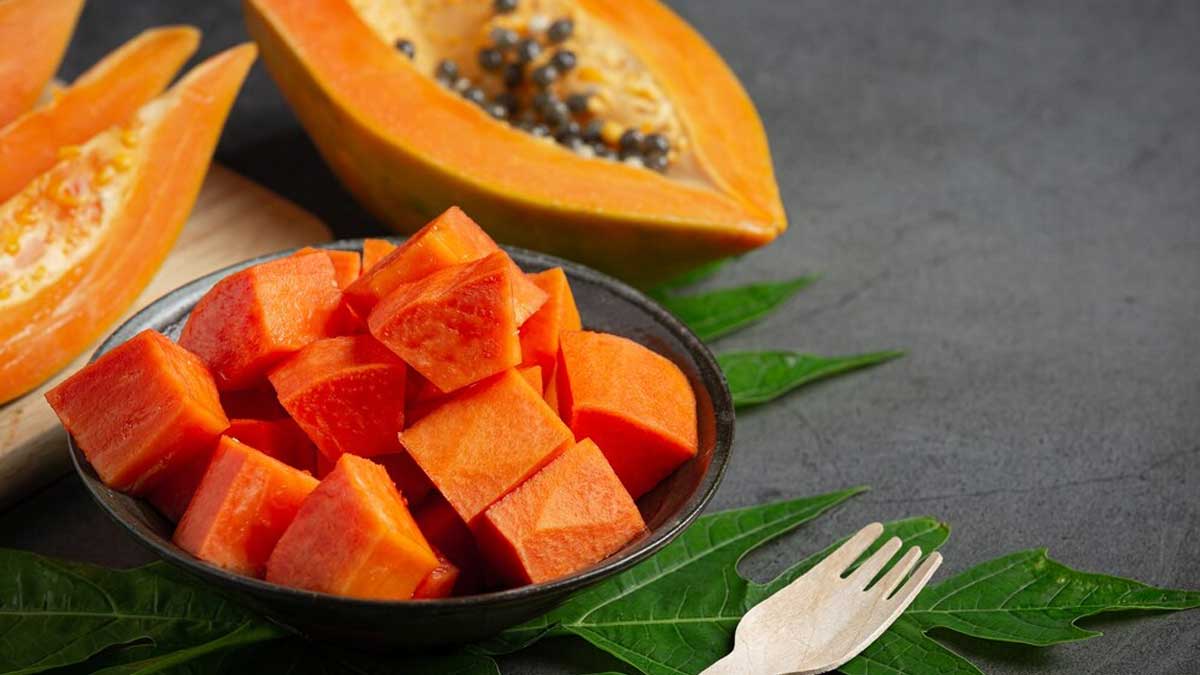
When we think of latex, our mind automatically jumps to a rubber-like material. So it may sound bizarre that someone with latex allergy also needs to stay away from certain foods, which can trigger cross-reactions due to the similarity between the proteins in latex and those in specific fruits and vegetables.
According to the American College of Allergy, Asthma, and Immunology, latex allergy causes hives, itching, stuffy or runny nose, wheezing, chest tightness and difficulty breathing. Shockingly, it can also be fatal and hence people who deal with latex allergy need to stay away from the following foods:
Papaya
Papaya contains enzymes with similarities to latex proteins, making it a common trigger for cross-reactions. According to a study titled Latex-Papaya Syndrome, all the participants with latex allergy had a history of papaya-induced anaphylaxis. Individuals with latex allergies may experience oral symptoms such as itching or swelling after consuming papaya.
Bananas

Bananas are known for cross-reactivity with latex, as they share similar proteins. While not everyone with a latex allergy will react to bananas, it's essential to be vigilant, especially if you've experienced cross-reactions in the past.
Avocado
Avocado is another fruit that can elicit cross-reactions in individuals with latex allergies, according to a study by the American Allergy of Allergy. The proteins in avocados may trigger allergic responses, ranging from mild oral symptoms to more severe reactions in sensitive individuals.
Kiwi
Kiwi is a fruit that contains proteins similar to those in latex. Consuming kiwi may lead to cross-reactions in individuals with latex allergies, causing symptoms such as itching, swelling, or even more severe allergic responses.
Also Read: Latex Allergy: Symptoms, Causes And Treatment By Dermatologist Dr Neha Dubey
Mango

Mango contains proteins that can cross-react with latex allergens. Individuals with latex allergies may experience oral symptoms or more severe reactions after consuming mango, especially if they have heightened sensitivity.
Chestnuts
Chestnuts, particularly European chestnuts, can trigger cross-reactions in those with latex allergies. Roasted or raw chestnuts may contain proteins that elicit allergic responses similar to those experienced with latex exposure.
Tomato
While less common, some individuals with latex allergies may experience cross-reactions with tomatoes. The proteins in tomatoes can share similarities with latex, leading to allergic responses in sensitive individuals.
Also Read: Are You A Fan Of Tomato Ketchup? Here Are 6 Reasons Why You Should Consider Avoiding It
Navigating a latex allergy involves more than avoiding latex gloves and balloons. Awareness of cross-reactive foods, such as papaya, bananas, avocado, kiwi, chestnuts, mango, and tomatoes, is crucial for managing allergic responses. By understanding potential triggers and making informed dietary choices, individuals with latex allergies can enjoy a well-balanced and allergen-aware lifestyle. Always seek professional advice to tailor your approach based on your unique health needs and sensitivities.







